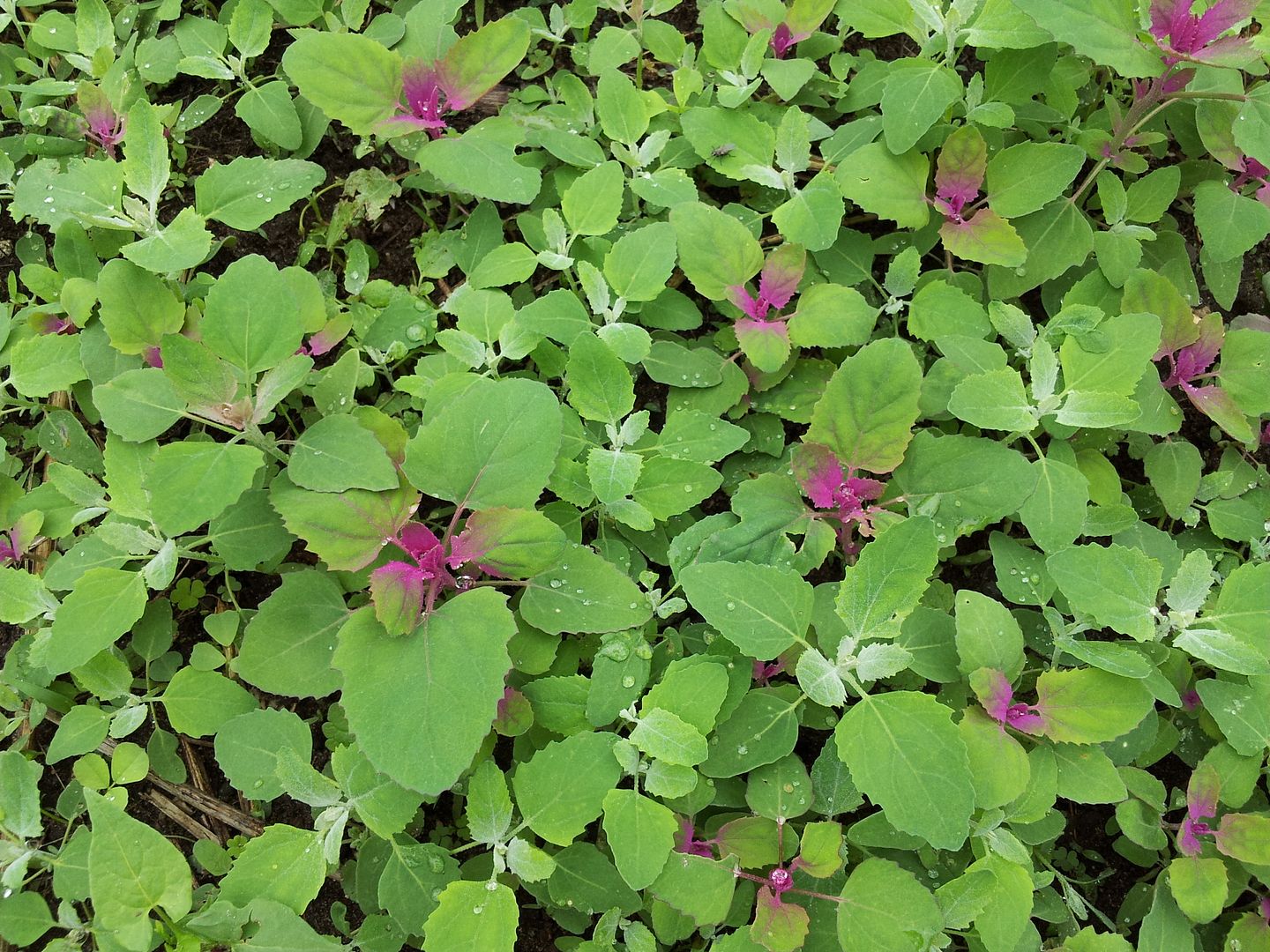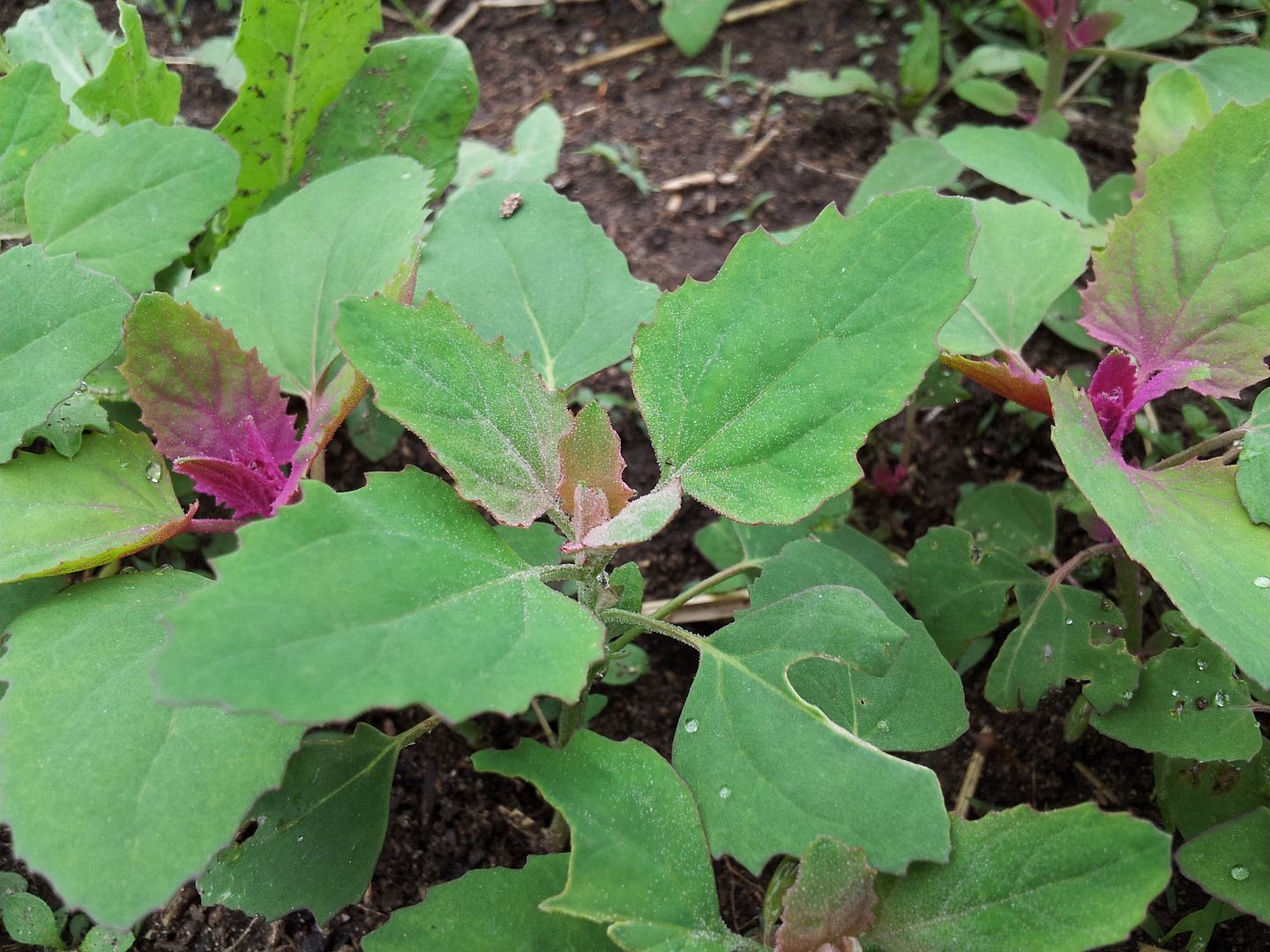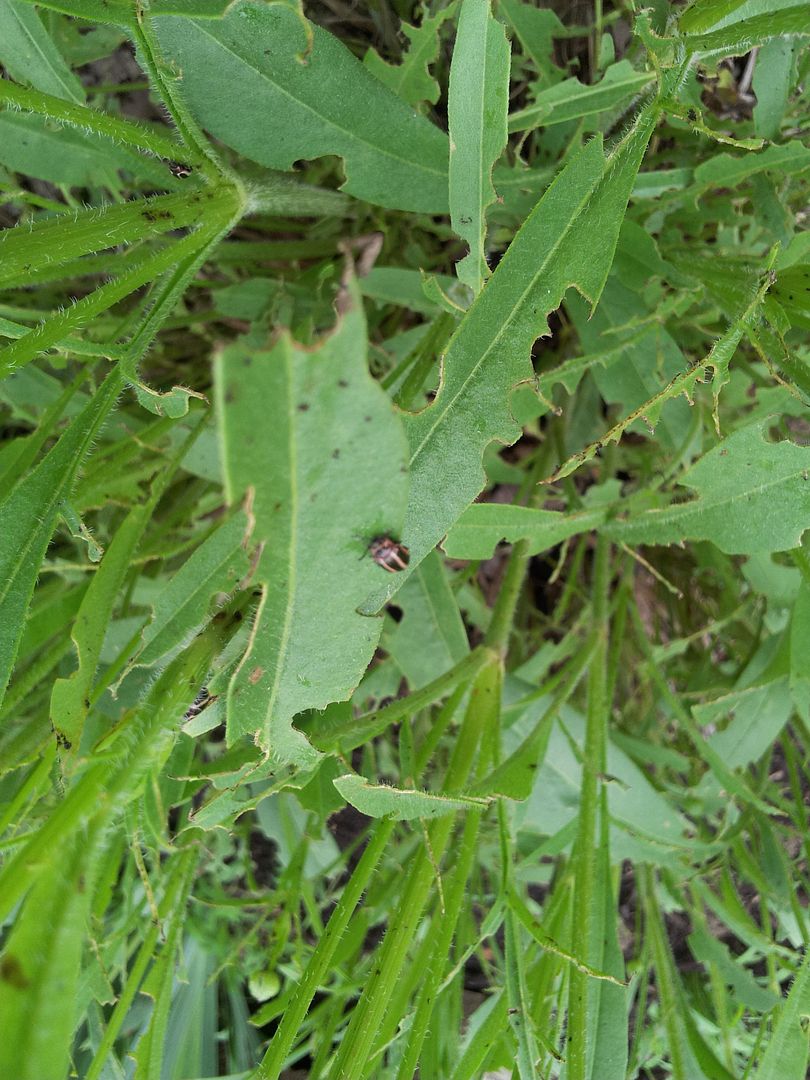
Coreopsis beetle whose host plants include ragweed though mine preferred the showy, native ornamentals. Sorry about the fuzzy image, the torrential rain we've been having prevented me from taking another shot.
Yes, I'm talking about the various bugs who lay their eggs on the leaves of their favourite host plant to hatch into a brood that uses being gross as a defence. They will cover themselves in their own excrement presumedly so the predator will be too icked out to eat it. Colorado potato beetle - CBE* - (Lepitinotarsa decemlineata) and lily beetle (Lilioceris lilii) being among the most well known. This year I also met the Coreopsis beetle (Calligrapha sp.). I have not had the honour of observing any of the latter's young so I'm not sure what their toileting habits are yet.
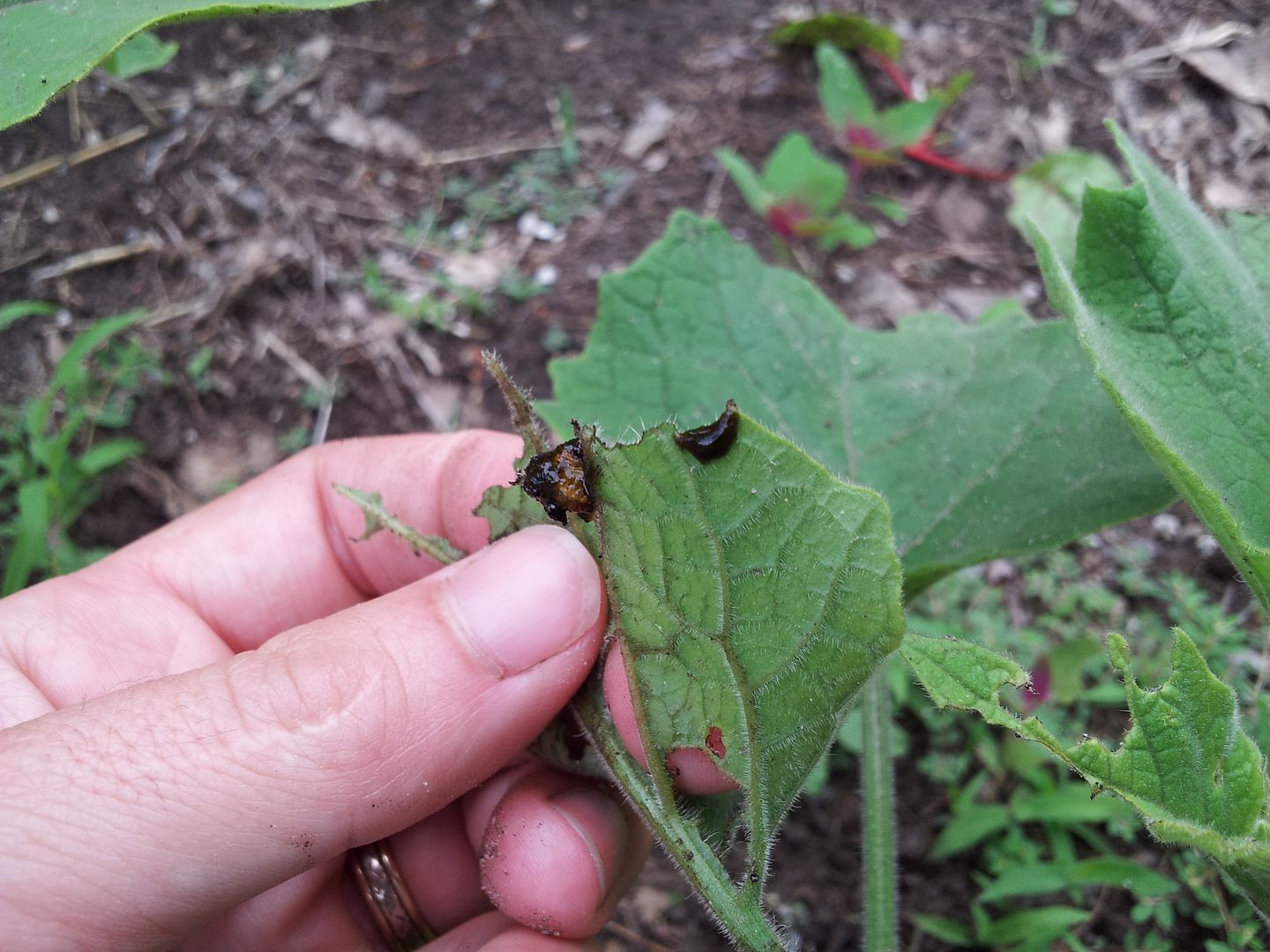
CBE young on clammy ground cherry (Physalis heterophylla). I usually only find them on this native, weedy perennial (with edible fruit FYI) so I consider it a trap crop. It is possible that this is a more narrow host leaf beetle that resembles CBE.
In the family Chyrsolmelidae, the leaf beetles are some of your nearest and dearest aggravants including not only the infamous CBE (which, by the way, was previously an innocent little native munching away on buffalo burr out west), but asparagus beetle, bean weevils and even flea beetles such as the one that enjoys my cole crops.
I control the larger bugs (flea beetles in another post) by hand picking and tossing into a bowl of soapy water as I go along the rows. Place receptacle under the plant that you wish to unburden because these critters drop when disturbed. If I don't happen to have my bowl with me, I squish them between my fingers. Wear gloves if you can't handle bug guts. If you miss the adults, then many lay eggs on the undersides of leaves. CBE eggs are bright orange and very squishable. The young are gross as noted but will squish if you can stomach it or drop them in that same bucket of soapy water.
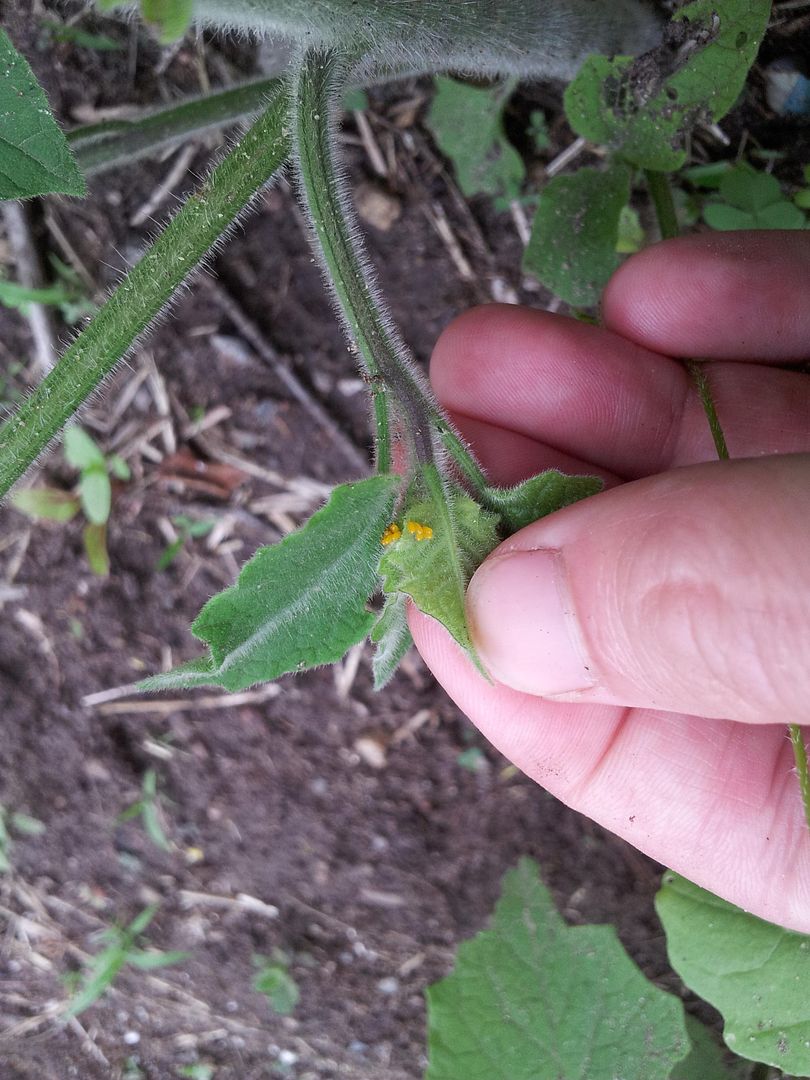
Eggs of CBE or related beetle on Clammy ground cherry.
On the first day of collecting Coreopsis beetle from the plant, I removed hundreds. The next day it was a few tens and the next day around six. You have to be diligent though and be prepared for multiple waves. For those with truly massive gardens, floating row cover is probably easier. My gardens are very, very big compared to typical sub/urban sizes but still manageable.
Speaking of leaf eating bugs, here's a picture of my earwig traps:
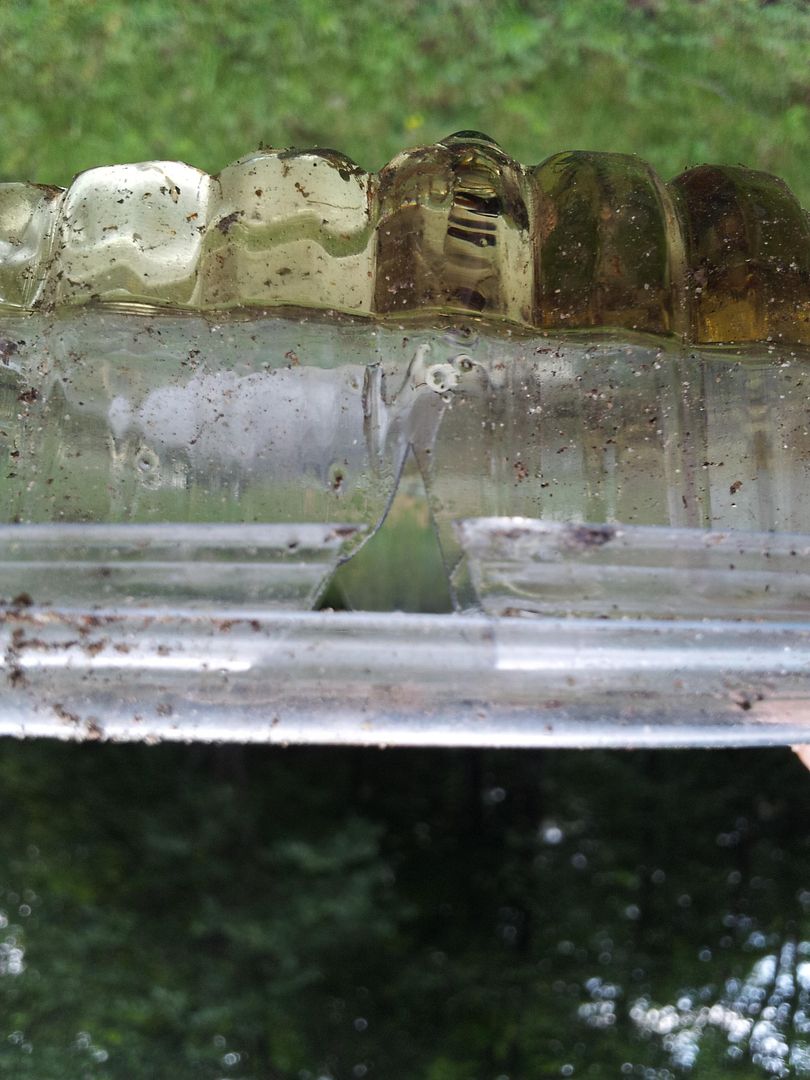
Mostly rainproof - not torrential rain proof - earwig (etc...) trap.
These are the kind of containers that dry nuts and fruit come in. After entry windows are cut, they are filled with about 0.5-1 inch of old cooking oil and soya sauce, closed and then placed near damage with a heavy rock on top to keep out animals. Think flattish to distribute weight and conceal it. Earwigs like cozy daytime hiding places. It is not a discriminating trap so best to use when there is heavy damage as it does trap ants and the odd earwig predator. Alternatively, you can use rolled up newspaper or corrugated cardboard. They feed at night then hide during the day. Throw paper traps into soapy water or give to the chickens.
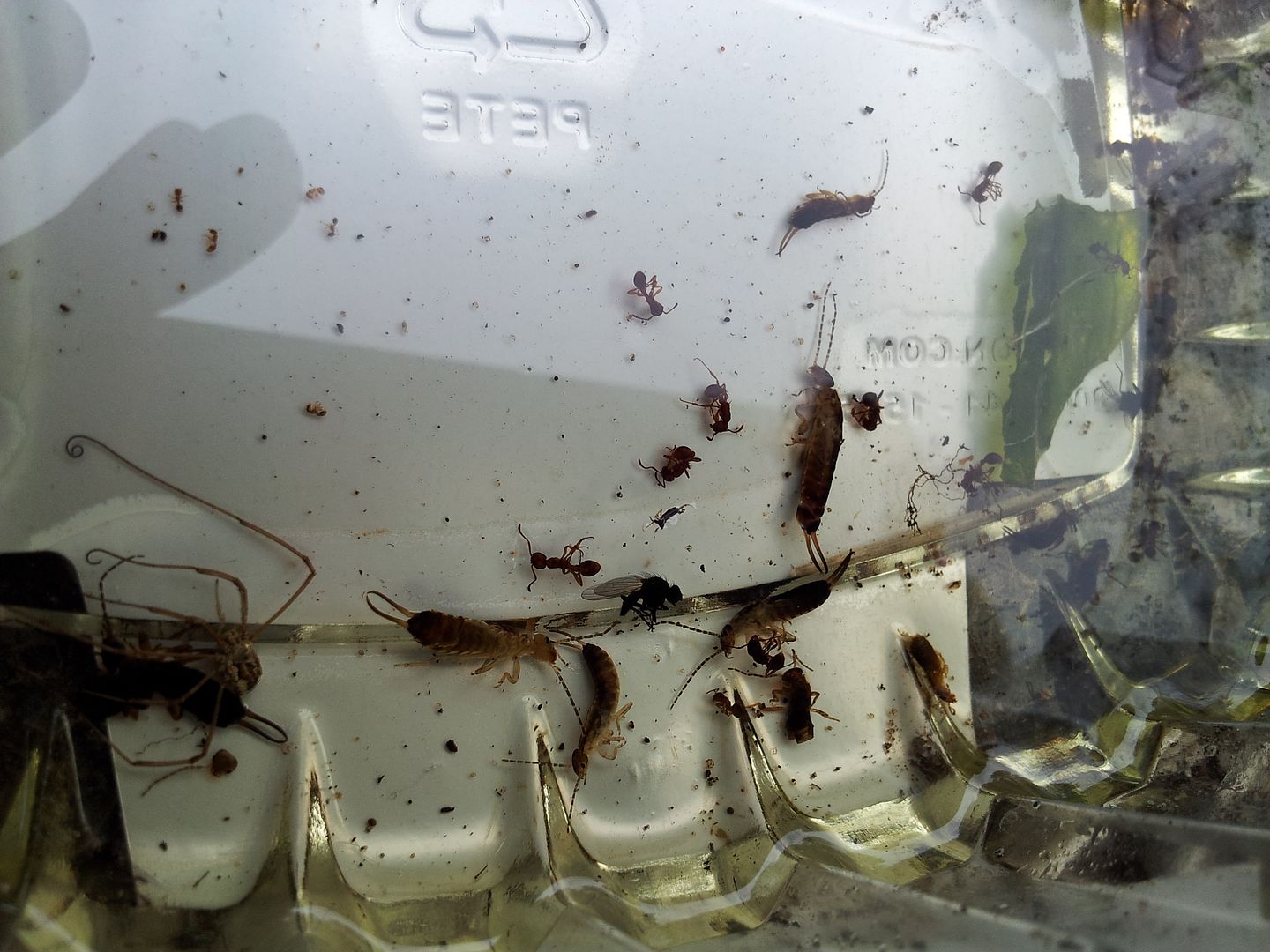
Bug corpses in sauce.
Some people recommend gritty things like food grade diatomaceous earth (DE) or wood ash but I find trapping or loosing chickens into the garden more effective (though chickens like salad too).
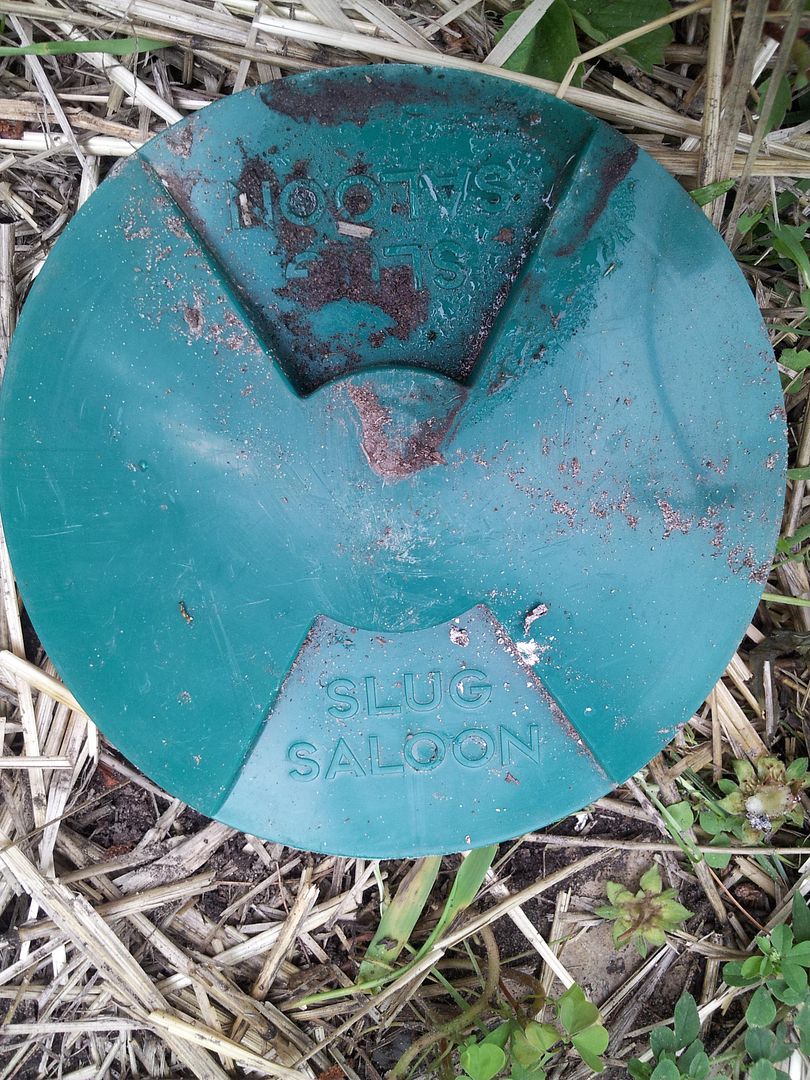
Commercial slug/earwig trap. I bought one to see how it preformed but didn't like the bait as it moulded creating a solid skim on top - yes this post is full of gross stuff.
If you are not sure if you are getting earwig damage or something else is snacking on tender young growth and seedlings, go out at night with a flashlight. Other culprits include slugs or snails and their slimy trails and the snapped leaves and stems caused by cutworms.
Edited to add this great idea from a comment on Edible Ottawa Gardens Group FB: A commenter said that his father used to leave shop towels around the garden and would shake them out and the earwigs into a bucket of water in the morning. P.S. I started the above FB group as a way of getting together with other food plant geeks. It has more members than this blog has registered readers. So come and join us! (or follow this blog or heck do both)
* Henceforth in this post, I will lazily write CBE. I blame time.

